PRESERVING A MILITARY LEGACY FOR FUTURE GENERATIONS
The following Reflections represents AOCM David Phillips’s legacy of his military service from 1964 to 1994. If you are a Veteran, consider preserving a record of your own military service, including your memories and photographs, on Togetherweserved.com (TWS), the leading archive of living military history. The following Service Reflections is an easy-to-complete self-interview, located on your TWS Military Service Page, which enables you to remember key people and events from your military service and the impact they made on your life. Start recording your own Military Memories HERE.
Please describe who or what influenced your decision to join the Navy.
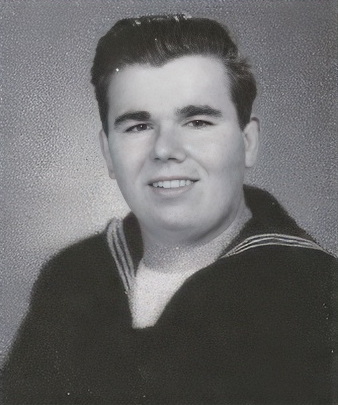
There were several events that occurred in my life which contributed to my decision to join the navy. The first occurred in 1958 when I was a young thirteen years old. My oldest brother was serving in the Navy; he joined in 1956 and in February 1958 he was on his way home on leave from his duty station in Norfolk, Va.; unfortunately, he was killed in a car accident. In my young mind, I swore I would join the Navy to finish what he had started. You see, he had only been in for two years.
The next event was the Vietnam conflict, in 1964; the draft board was breathing down my neck and I had no desire to spend time in a foxhole or a rice paddy, therefore I went to my local recruiter and joined the navy.
Also, I had met my soul mate and we wanted to get married, but we both knew we could not make it on the income I was making at the time or would be making any time soon. So we both agreed, I would go ahead and join the Navy and as soon as I made PO3 we would get married. This is what we did and I’m proud to say, she is still with me today!
Whether you were in the service for several years or as a career, please describe the direction or path you took. What was your reason for leaving?
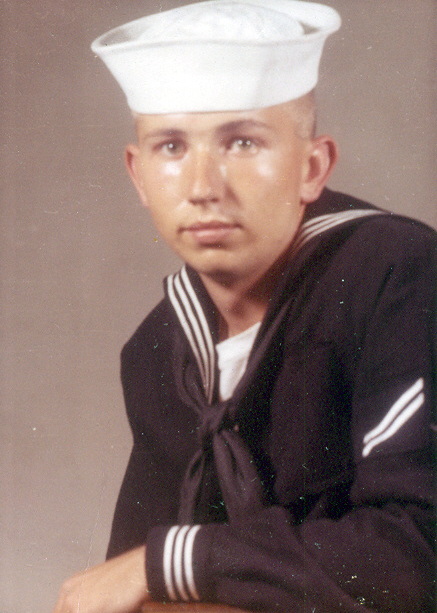
When I joined (March 25, 1964), I had every intention of staying for a twenty-year career, because that was what my brother was going to do before his demise. When I enlisted, I did not have a high school diploma; as a result, I was not eligible for assignment to an “A” school after finishing recruit training; which I completed at Naval Training Center, Great Lakes, IL.
After boot camp, I received orders to NAS Cecil Field, Florida; I was born and raised in Florida and had no idea where that was located. Boy was I surprised to find it was only a three-hour drive from my home town! Upon reporting to NAS Cecil Field, FL. and being a non-rate striker, only an Airman Apprentice, I was assigned to the Weapons Department as a compartment cleaner, in the area of the base where they stored the special weapons; although at the time, I had no idea what that was. My assignment was for six months and during this time, I received the Sailor of the Month Award. My performance coupled with some demonstrated mechanical abilities got the attention of the Weapons Department Leading Chief. So, when my time was up as a compartment cleaner, he requested I be transferred to the Weapons Department. It was my luck, the missile shop needed an E-2/E-3 to bring their manpower up to speed and I was assigned to the missile shop. You see, the neat thing about this is, it was at another base, NS Mayport, Florida. I watched and studied my shipmates and their ratings trying to decide which one to strike for. Well as you know, I chose the AO’s they seem to have the most fun, worked hard, played hard, and could drink the most! I will tell you more about this assignment in one of the following questions.
Twelve months later I was promoted to AO3. I would listen to the ones who took the test before me; when they returned from their test and started asking each other questions from their test, I would commit their answers to memory and this is how I learned most of the subject matter all the way up the ladder.
In June 1966, I was transferred to Patrol Squadron 1 (VP-1) at Whidbey Island, WA. with orders to Air Crewman School at VP-30, North Island, San Diego, California; I transferred to VP-1; in transit, I married my sweetheart and spent our honeymoon traveling cross country to California. After about five or six months at VP-1, I reenlisted for six years; with guaranteed orders to AO “B” School, (I did not think I could make AO2, in that I did not go to AO “A” school), with guaranteed promotion to AO2 upon graduation. Well, about a month before transferring, I took the AO2 rating exam; to my surprise, it was almost all about ASW Ordnance, what I had been working with for the past six months. Long story short, I passed the test and was promoted upon arrival to AO “B” school. I successfully graduated “B” school; the morning of graduation, my wife gave birth to our first son. I was assigned to VA-105, at NAS Cecil Field, this was a new A7A squadron being commissioned, which required assignees to go through FRAMP training at VA-176, NAS Cecil Field. During my three year assignment, I was promoted to AO1 my first time up. The squadron made its first deployment on board the USS Kitty Hawk in the Gulf of Token, Oct. 1968 to Nov. 1969.
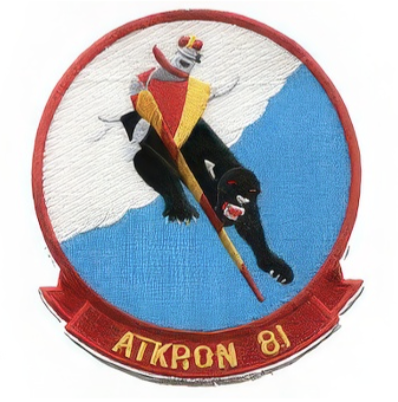
December 1969, I received orders to AO “A” School’s Command, NATC, NAS Jacksonville, FL. for instructor duty. During my tenure here I was awarded Instructor of The Year, and was selected to Chief Petty Officer, June 1971 and initiated on July 16th; September 1, 1971, I was appointed to the rank of Warrant Officer (WO1) two months later, and transferred to VA-81, the Sunliners, an A7E squadron. I was assigned as the Weapons Division Officer; during this assignment, I was promoted to CWO2. Toward the end of this assignment was a stormy time, due to a personality conflict with a senior department head, resulting in a less than stellar Fitrep.
In 1974, I was transferred to NAS Patuxent River, MD, assigned to NAILSC as the Dept. 900 Division Officer. The division was responsible for the development of MRC’s (Maintenance Requirement Cards) for the Navy’s inventory of ground support equipment and for conducting in-service reviews for same. This is the tour of duty where I discovered and learned the political posturing of upper-echelon commands. I was also able to hone my writing skills, my department head was an English major with a master’s degree. I could not believe how much my first official report bleed red ink; however after a few months, they would not bleed at all, he was an excellent teacher.
December 1976, I was transferred to the USS Independence, CV-62, assigned as the G-4 Division Officer. The division was responsible for the maintenance of all the weapons elevators on board. This was one of the few ships that had two new elevator system that was run by a computer; each elevator’s computer was 6’x 4’x 2′ and had more micro cards then you could count using all the digits on your body! This was a nightmare if there ever was one. July of 1977, I received word that I had failed promotion to CWO3, which was a result of the one poor Fitrep I received in VA-81. I was so upset, I went to the ships Commanding Officer and requested to be reverted to my permanent enlisted rank of Senior Chief Petty Officer; which he approved and the paperwork was submitted up the chain-of-command.
Upon my reversion to AOCS, I was transferred to VA-85, an A6E squadron based at NAS Oceana, VA. I was assigned as the Quality Assurance Division Supervisor. One year later, I had the honor of being the first ever, Aviation Ordnanceman to be assigned as a Maintenance Control Senior Chief in the history of the A6 community; at least that is what the command told me. My year as the QA Supervisor paid off well.
In 1979, I was transferred to VF-171 an F-4J/S squadron; I was assigned to the FRAMP Department as the FRAMP Training Division Officer; this was a 02/03 billet. The division was responsible for the training of all aviation maintenance ratings transferring to F4J/S fleet squadrons. On April the 27th 1981, I was promoted to the rank of AOCM, only four years after reverting from CWO2 and I still only had 17.5 years of service.
November 1982, I was transferred to Commander Carrier Air Wing 8, (CAG-8), deployed on board the USS Nimitz CVN-68; assigned as the Command Master Chief. This was a very interesting assignment in which I found new respect in the handling and treatment of personnel. As the Air Wing Command Master Chief, I was assigned the responsibility of serving in the capacity of the Ships Command Master Chief in his absence. This assignment was a learning experience which enhanced my understanding of the political attitudes that are prevalent within the senior officer’s ranks (04 to 05), as I observed all the posturing performed not only by CAG staff officers but also by those in the assigned subordinate commands. Even with this, the working environment and the cooperation of the subordinate Command Master Chiefs were excellent and most rewarding.
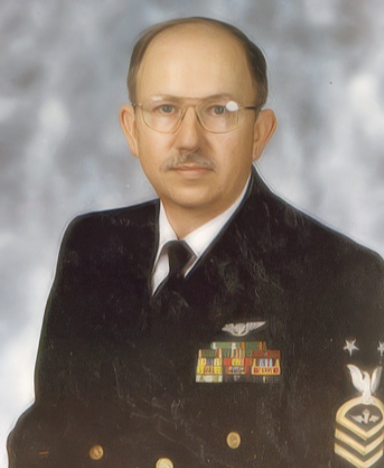
November 1985 I was assigned to NAS Brunswick, ME. Weapons Department; I found myself assigned to another 02/03 billet title, Conventional Weapons Division Officer. These assignments just did not make sense to me in light of my previous service as a CWO. This turned out to be an excellent tour of duty; in fact, I was not ready to leave when my tour was up. However, even good things must come to a close. Mid-November of 1988 I received a call from my detailer who told me he had a CNO Priority Billet just come open and I was the only AOCM in line for transfer and I had to fill this billet.
I reported to the USS America CV-66 at Norfolk, VA. December 1988, and was assigned as the Weapons Department’s Leading Chief. This was a very challenging assignment, but in the long run, everything worked out well and was a very successful tour of duty. We were deployed to the Persian Gulf in support of Desert Shield and Desert Storm.
At this time, January 1992, I was transferred to my twilight tour, to complete 30 years of service. I reported to NAS Cecil Field, Aircraft Intermediate Maintenance Department, (AIMD), 700 Division. Here we go again, another officer billet, CWO/02. I was successful in turning this division into one of the best on the East Coast. After a year in this assignment, I was assigned as the 900 Division Officer, GSE and Ground Electronics Officer. What a ride this was for the end of my career, which I accomplished flawlessly and was awarded the Navy and Marine Corps Commendation Medal, gold star in lieu of a second award.
Retired April 1, 1994.
If you participated in any military operations, including combat, humanitarian and peacekeeping operations, please describe those which made a lasting impact on you and, if life-changing, in what way?
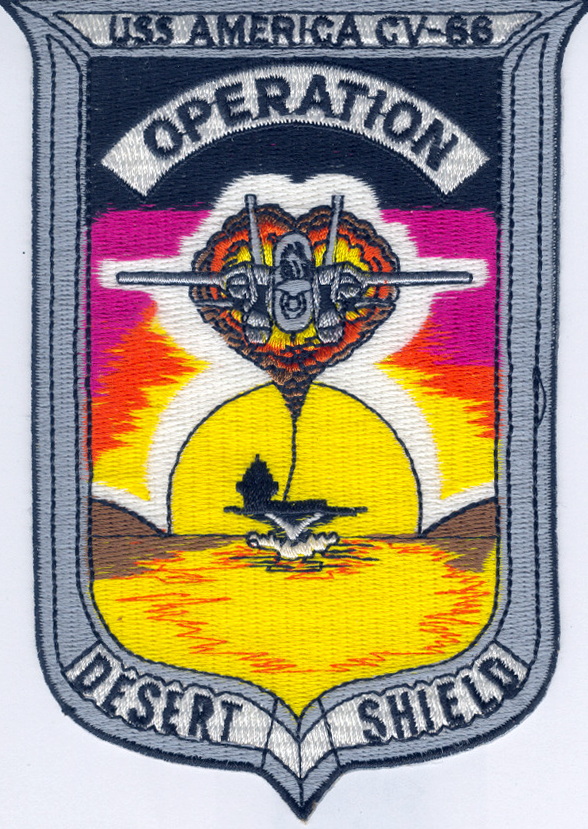
Assigned to VA-105 and deployed to the Gulf of Tonkin on board the USS Kitty Hawk, during November 1968 to October 1969, we conducted combat operations into Vietnam providing ground support for our troops. Although I and my shipmates were never in country, we still played an important role during this action.
On board the USS America CV-66; deployed in the Persian Gulf; January 16, 1991, to February 28, 1991, Operation Desert Shield and Desert Storm, provided air support and maintained air superiority over the region. Once again, I and my shipmates were not in country; however, we all played a roll in the success of this mission.
Both conflicts are significant for me in that I was honored to have had the opportunity to serve in each.
Of all your duty stations or assignments, which one do you have fondest memories of and why? Which was your least favorite?
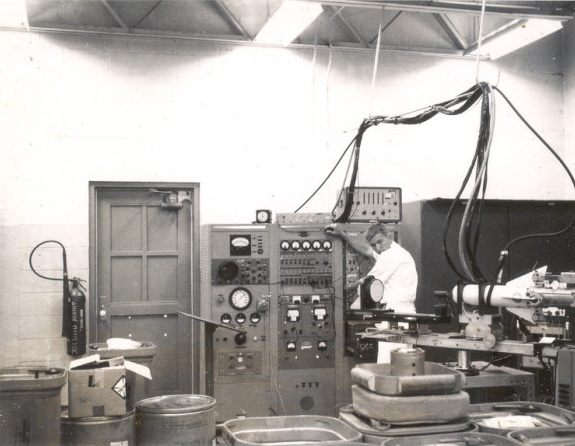
In 1964 when I was assigned to NAS Cecil Field’s Weapons Department’s Missile Shop; located at NS, Mayport, FL. The senior man at this shop was a Chief, there was no officer. If this was not McHale’s Navy, it did not miss it by much. The purpose of this shop was to remove all sidewinder and sparrow III missile’s guidance and control units from the aircraft carriers upon their return from deployment and test them. Well, this task took only two or three weeks to complete. There were only two aircraft carriers home-ported at NS Mayport and the interval between the two ships departing and returning was about 7 months; after the missiles were tested and returned to the ship, we had nothing to do for six months other than checking the test equipment periodically and keeping the facilities cleaned.
Every other Friday was a cookout at the Chief’s home or on the beach, and the other Friday, we fished for the cookout. The rest of the week we would play softball, football, and spend a lot of time on the white-sandy beaches. There was always a party going on somewhere!
As an E-3, I was in a seven section duty section and all you had to do was stay in the shop and answer the phones. We had a bunk room in the shop where seven of us lived, so there was always someone there who would take your watch if you needed to be elsewhere, except on Wednesdays, this was field-day of the main office, however, after you were done it was not difficult to get someone to take over.
Then there was the assignment to VA-81, my first tour as a WO-1. This was my least favorite assignment of all. The difficulties I encountered the last year at this command was based exclusively on a personality conflict between me and a department head that had zero experience working with WOs or CWOs and wanted to utilize me as if I was an Ensign. Not a happy experience.
From your entire military service, describe any memories you still reflect back on to this day.
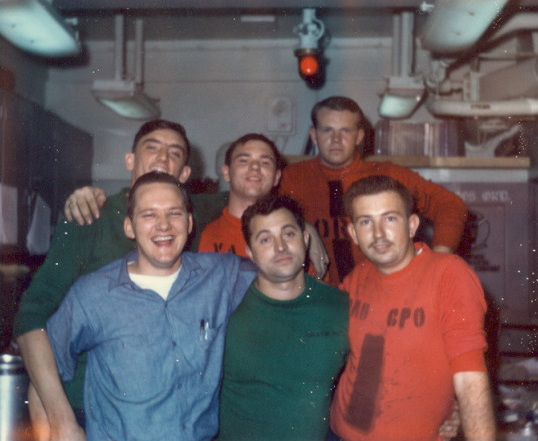
The one that stands out the most would be back in 1969 in VA-105 on board the USS Kitty Hawk, during day flight operations. I was a member of the ordnance arming crew on the bow cats, when an F-5 Vigilante launched off the starboard bow cat and halfway down the track, the plane’s tail cone flew off and the cylindrical gas tanks ejected out on to the catapult; splashing large quantities of JP-5 on the deck and catching fire. On the port catapult, there were four A7’s loaded with 12 ea., 500-pound bombs on them, I and the rest of the arming crew were between them and the rapidly approaching wall of fire coming our way. We only had seconds to get to the catwalk and man the triple ‘F’ station and commence putting the fire out before it reached those aircraft. To this day, I still don’t know how we were able to respond so quickly. We were just lucky the momentum of those fuel tanks was such that they continued to travel down the catapult track and launch off the ship into the sea. It was not fifteen minutes after the fire was out, the ship went to “GQ” due to a fire in one of the main engine rooms. That was a day to remember.
June 1971 when I was initiated as a Chief Petty Officer; this was the day I was reborn and earned my stripes as a man. Then September 1971 appointed a Temporary Warrant Officer, two significant milestones in one year of a career, how can one not cherish such accomplishments.
What achievement(s) are you most proud of from your military career?
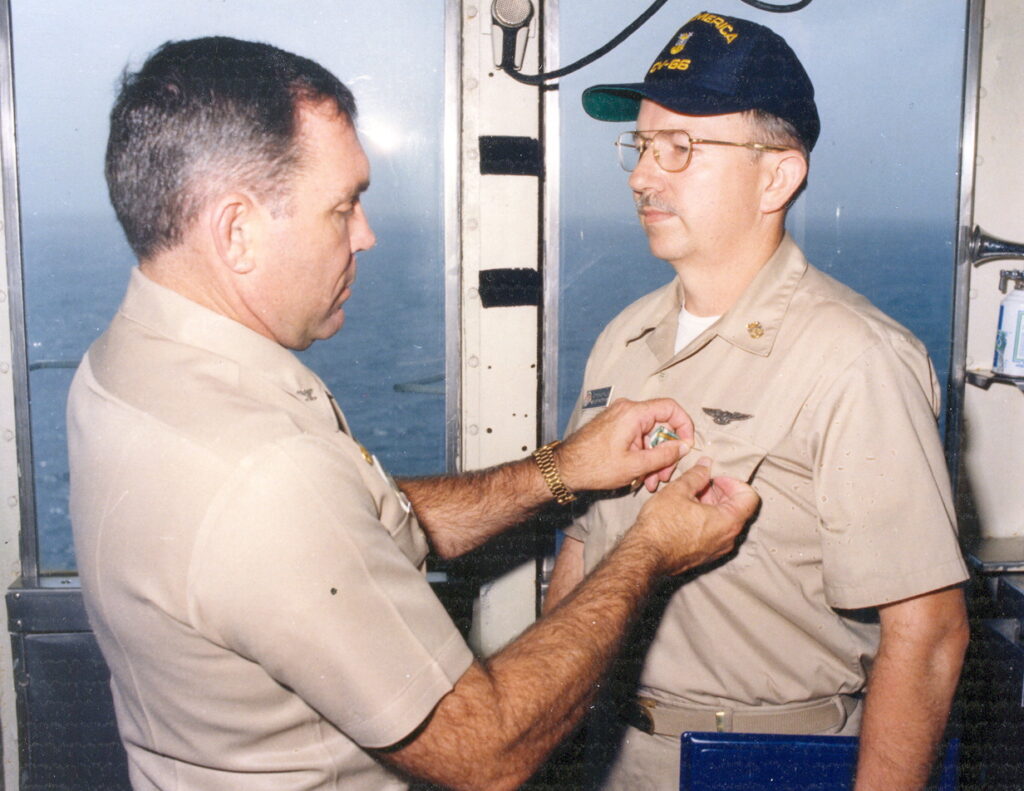
Fortunately or unfortunately, I was never in a position to receive a medal for valor; I did not receive any significant awards until my first Navy Achievement Medal in 1982:
The citation read as follows:
“For outstanding sustained professional achievement in the performance of duty while serving as the Framp Department Division Officer of Fighter Squadron ONE- SEVENTY-ONE from 30 March 1980 to 22 July 1982. Master Chief Phillips consistently performed in a superior professional manner achieving the highest levels of operational readiness and efficiency. His managerial and leadership skills were superb and his innovative ideas, including the development of a command-wide extra military instruction program, accurately demonstrate tremendous personal initiative and an intense sense of duty. By continuously striving to improve the Framp department’s efficiency, by demonstrating the utmost diligence and resourcefulness, and by outstanding managerial skills, Master Chief Phillips contributed directly and significantly to the accomplishment of the command’s mission. Master Chief Phillips’ exceptional abilities, initiative and loyal dedication to duty reflect great credit upon himself and are in keeping with the highest traditions of the United States Naval Service.”
In 1988 I received my first Navy Commendation Medal.
The citation read as follows:
“For meritorious service, while serving as the Aviation Ordnance Division Officer at Naval Air Station, Brunswick from 28 June 1985 to 1 September 1988. Master Chief Petty Officer PHILLIPS expertly managed four divisional work centers whose performance clearly reflected his commitment to excellence. Displaying acute attention to detail, he managed the Non-Nuclear Ammunition Inventory and Accuracy Program with a 100 percent ordnance accountability and developed procedures which became Commander in Chief, U. S. Atlantic Fleet standards. Master Chief Petty Officer PHILLIPS established the “model program” for Aviation Weapons Support Equipment, thus ensuring the use of only the most highly reliable and precise ordnance handling equipment. This exemplary record of professional expertise continued through his dedication to the Anti-Submarine Warfare mission of Patrol Wing FIVE, where his efforts dramatically increased operational readiness. In addition, he developed a comprehensive combat firearms training program which ensured Security Force proficiency. Master Chief Petty Officer PHILLIPS’ professional performance, initiative, and loyal dedication to duty reflect great credit upon himself and the United States Naval Service.”
April of 1994, I received my second Navy Commendation Medal.
The citation read as follows:
“For Meritorious Service from 1992 TO APRIL 1994 As Aircraft Division Officer and Ground Support Equipment Division Officer, Aircraft Intermediate Maintenance Department, Naval Air Station, Cecil Field Florida, demonstrating exceptional management and maintenance expertise, Master Chief Phillips flawlessly performed the diverse duties of a Division Officer in two of the most demanding billets on board Master Jet Base, Cecil Field. As the Aircraft Armament Officer, he coordinated with Commander, Naval Air Systems Command, Naval Air Force, U. S. Atlantic Fleet to obtain state-of-the-art inspection facilities for the LAU-7 missile launcher and nitrogen receiver bottles, preventing possible catastrophic failures of Aircraft missile systems throughout the fleet. His superior managerial skills and commitment to safety were the driving forces behind initiatives that resulted in cost savings of over $2 million. As Ground Support Equipment Division Officer, his experienced execution of maintenance procedures for an aging inventory of over 4,000 end-items of equipment ensured an unprecedented 97.6 percent availability rate. By his exceptional professionalism and selfless devotion to duty, Master Chief Phillips upheld the highest traditions of the United States Naval Service.”
Of all the medals, awards, formal presentations and qualification badges you received, or other memorabilia, which one is the most meaningful to you and why?
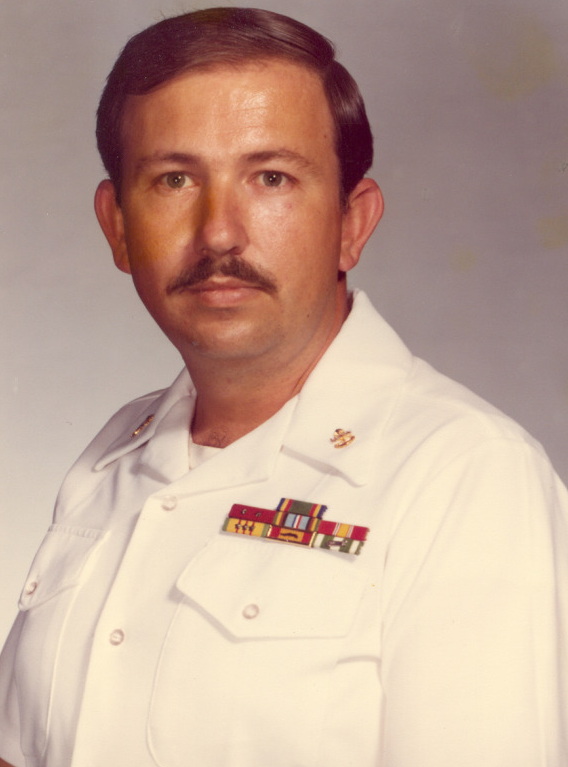
Right or wrong, I never placed any significant meaning to any of them; I viewed it only as doing my job to the best of my abilities; knowing that I did not earn them all on my own. The men and women assigned with me were big contributors if it were not for them; the job would not have been completed. We never achieve greatness without those who provide the labor.
Which individual(s) from your time in the military stand out as having the most positive impact on you and why?
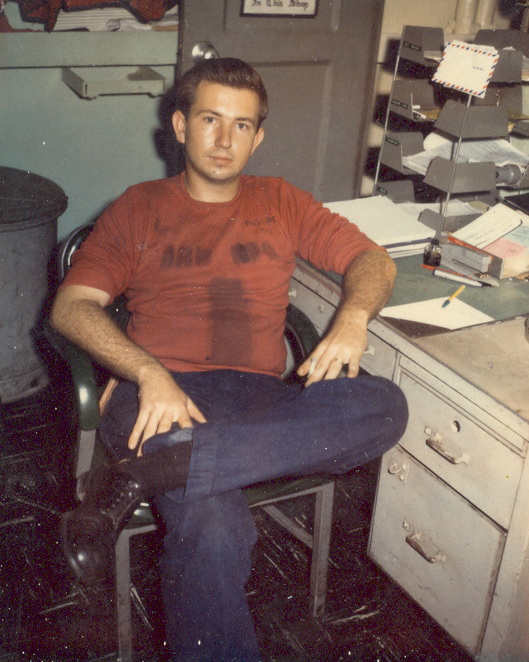
There were many throughout my career that contributed positively; keeping me on track, however, due to the volumes of water that has passed under the bow, I fail to remember all their names. If any of them read this, please forgive me for my forgetfulness. The first one that stands out was AO1 G. W. Hurd; he was the Leading Petty Officer in the Weapons Department, NAS Cecil Field. I was just a new AO3 when the missile shop at Mayport moved to new facilities at Cecil Field. Long story short, this was the first encounter AO1 and I had, we took a trip out to the magazine area and had a one-on-one discussion and when we returned to the shop, I had a renewed attitude about my position within the order of things. Of course, that form of leadership is long gone, but I will testify, it was very effective.
The second person of influence was CWO-2 Cox, Division Officer of the ordnance division in VA-105. He advised me that if I wanted to advance up the promotion ladder quickly, I needed to get out of the ordinance work center and work outside of my rate with the same outstanding performance and to take the jobs others did not want; also, I needed to stay on sea duty as much as I could. I followed his advice and did very well.
I must say, this gentleman provided the most support when I landed in his command, and that was, Vice Admiral Jerry O. Tuttle, then Commander and Executive Officer of VA-81. He realized I was a very young WO-1 and possibly needed some help in my new environment. He was like a father figure and held me up whenever I stumbled, which occurred often if I remember correctly. He was always there for me even after he became Commanding Officer of the squadron; it was a dark era after his transfer.
Can you recount a particular incident from your service which may or may not have been funny at the time but still makes you laugh?
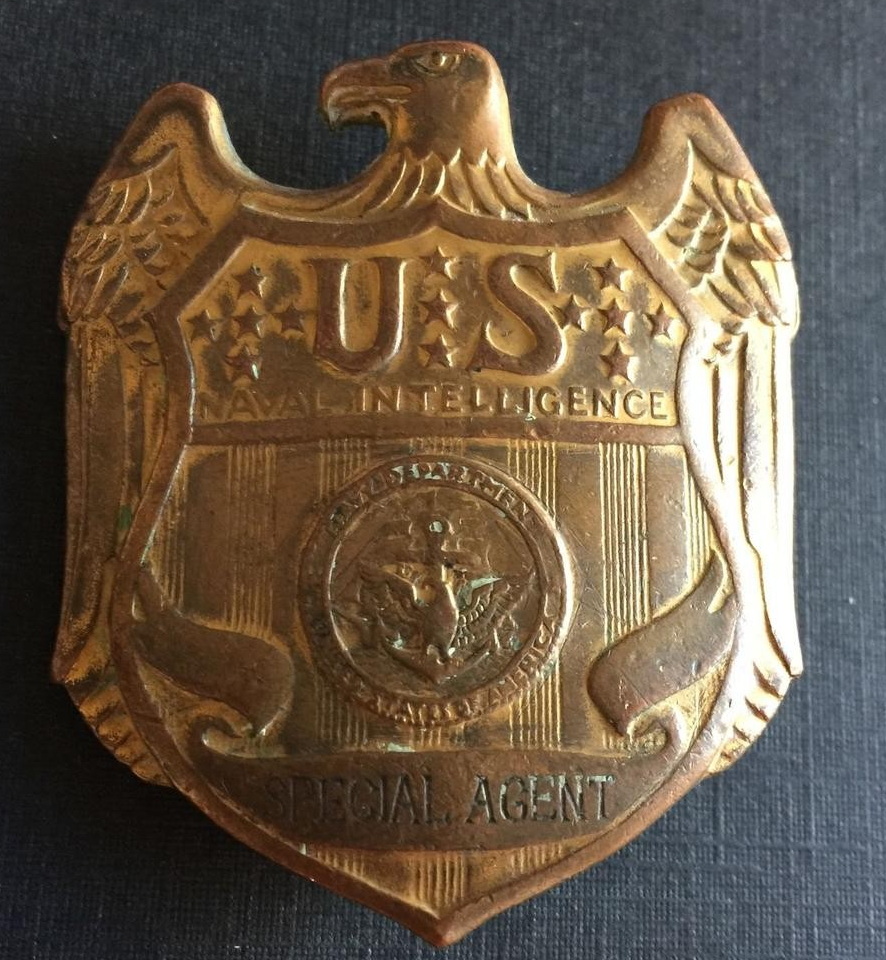
It was shortly after I was assigned to NAS Brunswick ME. My division leading petty officer, GMGC Mike Skinner, arrived in the division office one morning with every bit of hair removed from his head and face, yes, including his eyebrows with blood shot eyes. I asked him what had happened and with as serious of a look one can make, he answered: “I had a vision last night!” It took all I could muster to keep from laughing! We came to an agreement; there would be no more visions.
At this same command, I was called at home at around 2200 and was directed to report to the Weapons Office ASAP. Upon arrival, the Weapons Officer and a NIS (now NCIS) officer were waiting; the Weapons Officer and I were required to accompany the NIS agent to the home of one of our PO1s, the NIS agent had a warrant. Upon arrival, the warrant was handed to the PO1 and we entered the premises to conduct a search. A few weeks prior, some equipment and uniforms used by the Base Security Department were stolen from their storage in the Weapons Department building, a locked cage enclosure. During the search, the Weapons Officer and I were in one of the bedrooms, we opened the closet door, turned on the light and we both look at each other in amazement! There hanging in the closet were several dresses and a wedding gown and there were shoes to match all on the floor. We had discovered an alternate lifestyle! We moved the search outside to an outbuilding that was built on a crawl space; looking underneath, we found several large black plastic bags; inside these bags, we found all the stolen items. The PO1 got to wear a different uniform for a long time.
I will never forget the look on the Weapons Officer’s face when we opened that closet with all the dresses and the wedding gown.
What profession did you follow after your military service, and what are you doing now?
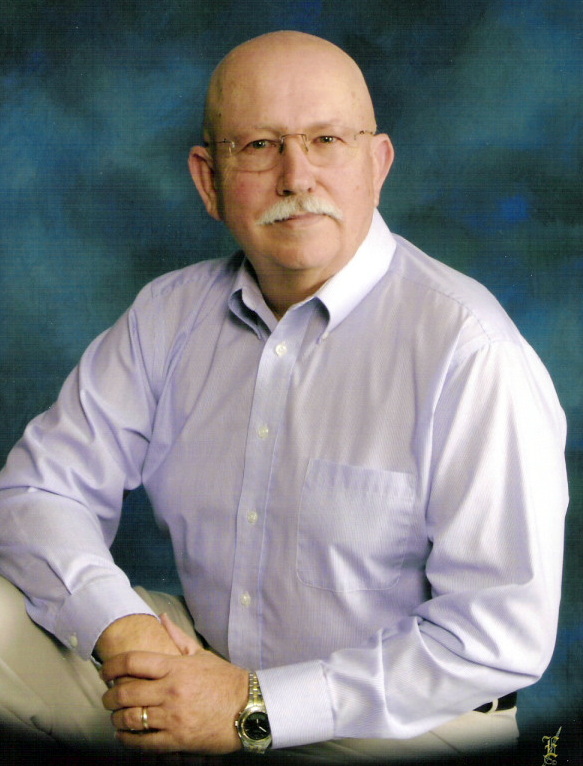
Upon retirement, I decided to earn a masters degree to improve my marketability in the civilian workforce, which I completed in 18 months at the extended studies campus of Webster University located on board NAS Jacksonville, FL. After which, I landed a job as a site office manager and VA advisor, for Embry Riddle Aeronautical University’s Extended Studies Campus on board NAS Cecil Field, Florida and became an adjunct professor for Embry Riddle teaching Principles of Management and Organizational Communications.
In 1996 I obtained a job with a thermal solar company as their Operations Manager; this was the largest thermal solar company in the United States at the time, American Energies Technologies (AET). They built solar panels for making hot water for domestic and commercial use. I chose to leave this company in 1998 and take some time off like a retired person.
I soon got tired of not doing anything but “Honey Do’s” in April of 2001 I went to work for Wal*Mart as a sale’s floor representative, within six months I applied for the position of Personnel Manager and was selected. After 11 months, I applied for the Assistant Managers program and became an Assistant Manager three months later. November 2005, I suffered a heart attack and had to go on a medical leave of absence for a year, I tried to come back and continue working; however, by June 2008 I had to hang it up and retire for good.
In what ways has serving in the military influenced the way you have approached your life and your career? What do you miss most about your time in the service?
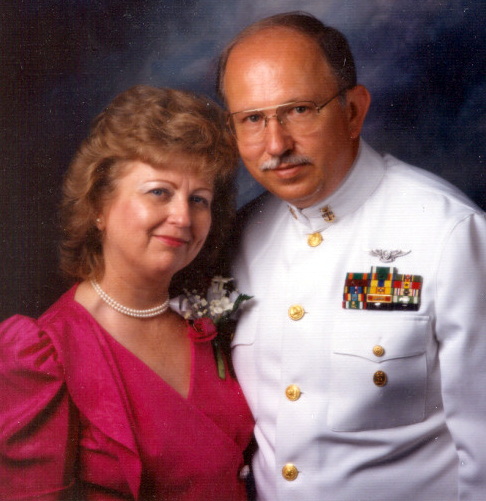
The military took a young boy off the streets and honed off the rough edges and polished him into a young man, a lean, mean, fighting machine. The military gave me purpose, direction, provided me the best training the world had to offer, and it taught me the meanings of HONOR, LOYALTY, and DIGNITY. It also turned me into a leader of men and women. All, which I learned there, continually provided the foundation and strength to pursue a rewarding civilian life.
Based on your own experiences, what advice would you give to those who have recently joined the Navy?
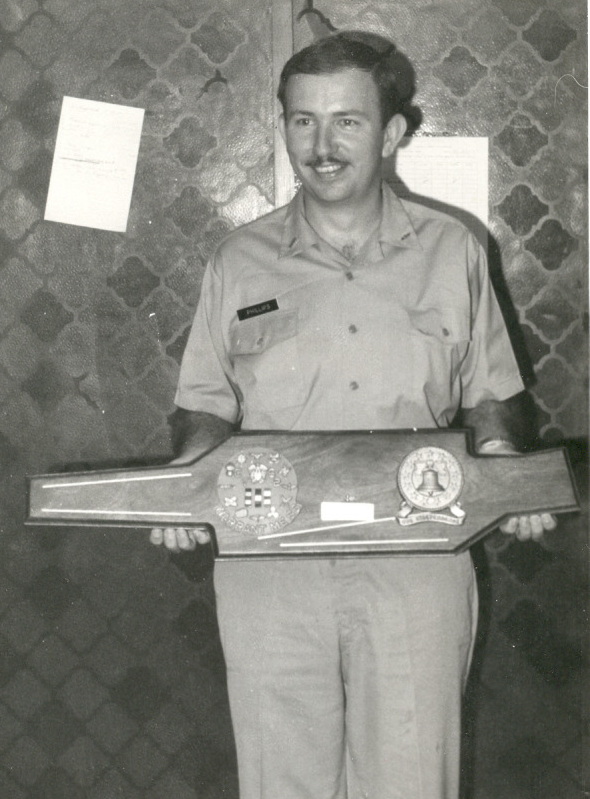
Well, like many others before me here have said, in a way; strip off all the baggage from the civilian world that you brought with you and open your mind, making it like a sponge and soak up all that you can. All the while, keeping your ears open and your mouth shut. Good or bad, respect those who have come before you and learn from their achievements and mistakes. There is no better teaching tool than experience. No matter what job you are assigned, approach it with a positive attitude and do the very best you can. It is like I was told once: If you are assigned to shovel out the horse barn, then become the best horse shit shoveler there is! PERFORMANCE IS EVERYTHING.
In what ways has togetherweserved.com helped you remember your military service and the friends you served with.
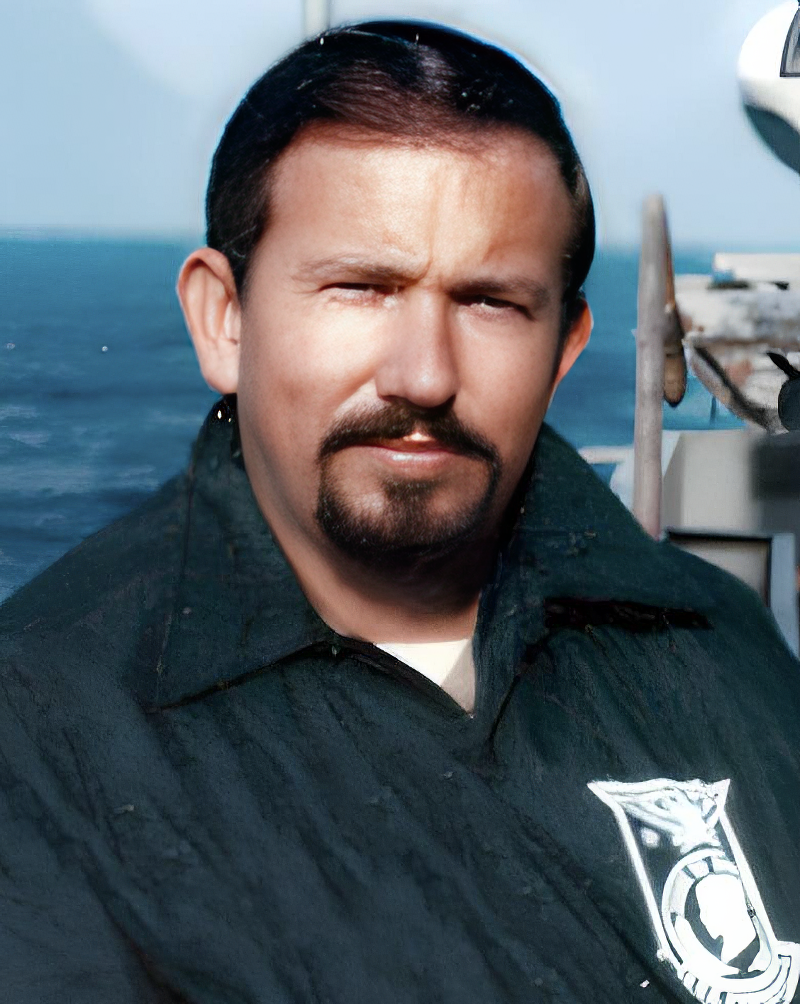
TWS provided the vehicle for me to search out those who I served with and allowed me the chance to rekindle old friendships and at the same time, lifted some of the fog that was forming in my head. Although I have not taken real advantage of this, it provides the opportunity to chat with service members you do not know, expanding not only the number of new friends but the mind as well. Thank you all for such a great service to all our military friends and families!
PRESERVE YOUR OWN SERVICE MEMORIES!
Boot Camp, Units, Combat Operations
Join Togetherweserved.com to Create a Legacy of Your Service
U.S. Marine Corps, U.S. Navy, U.S. Air Force, U.S. Army, U.S. Coast Guard
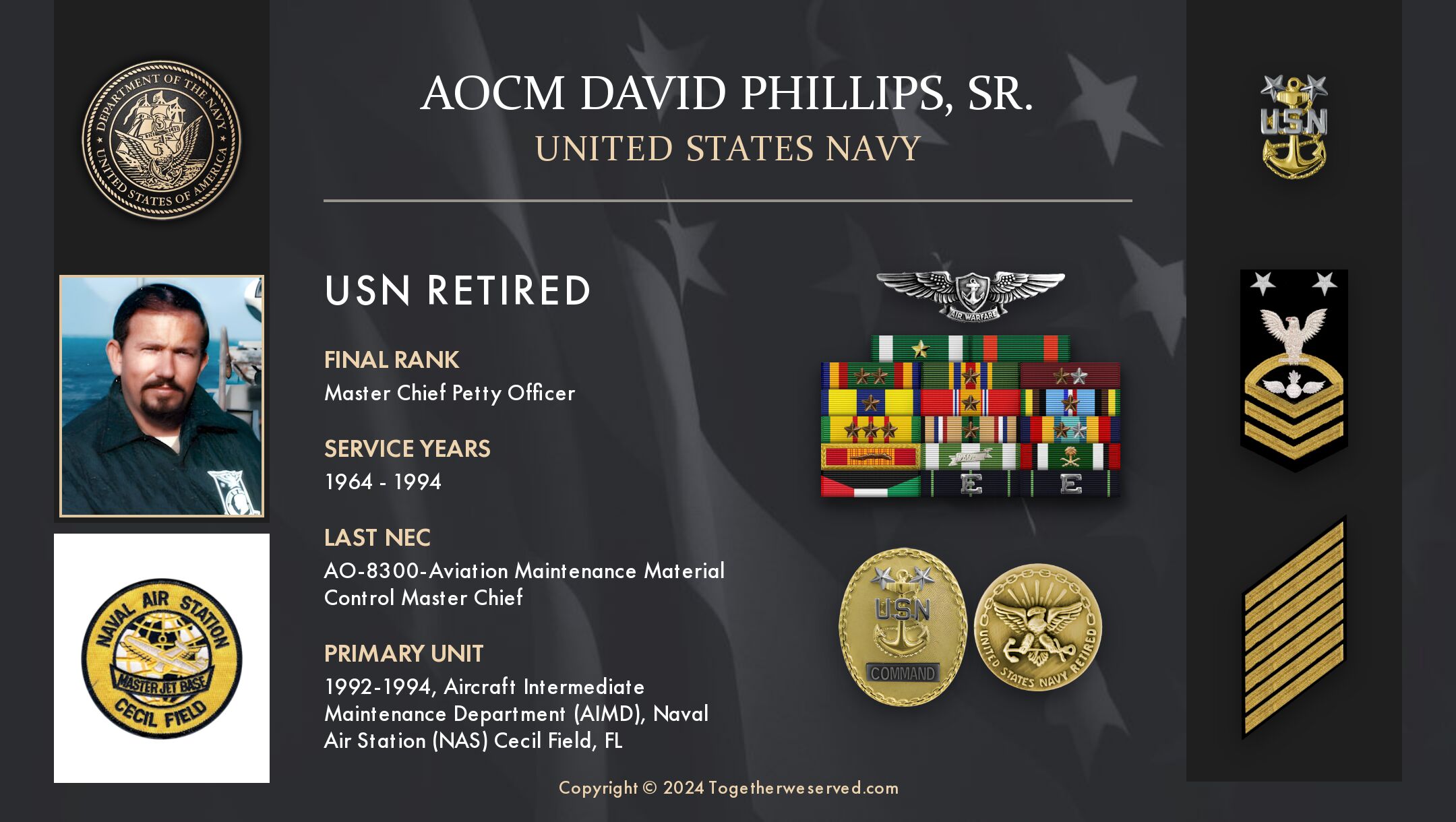
0 Comments